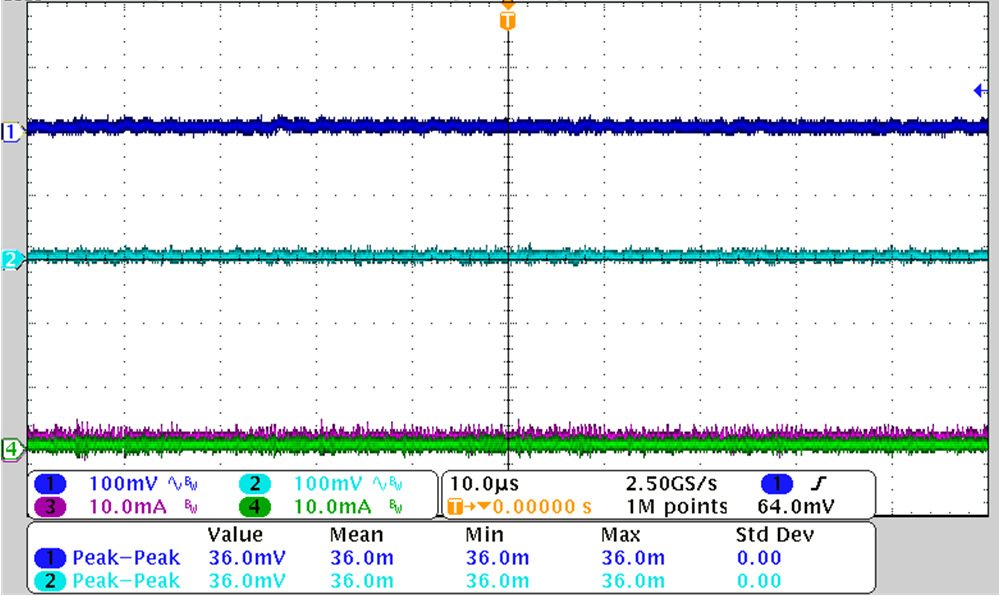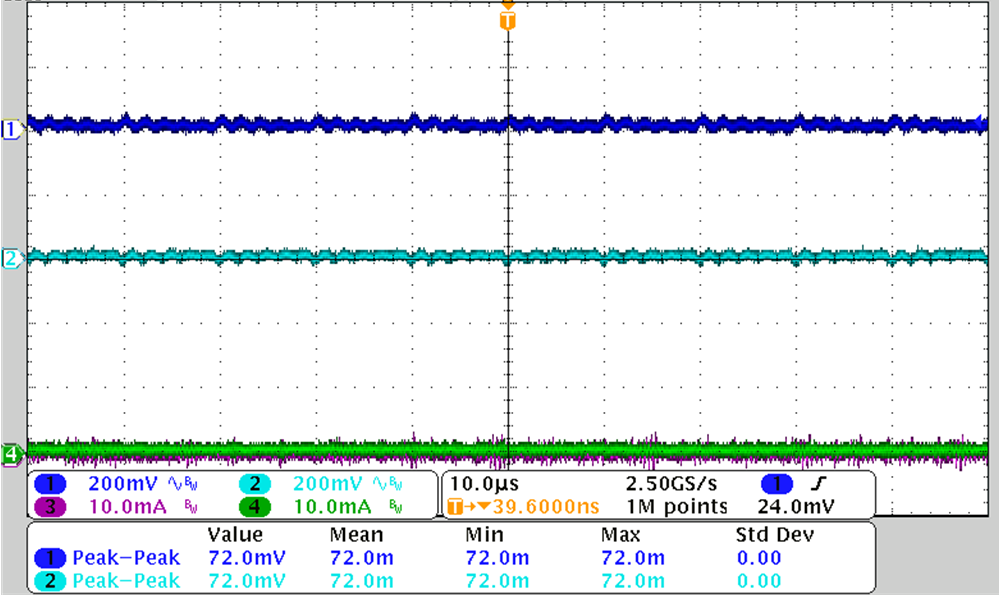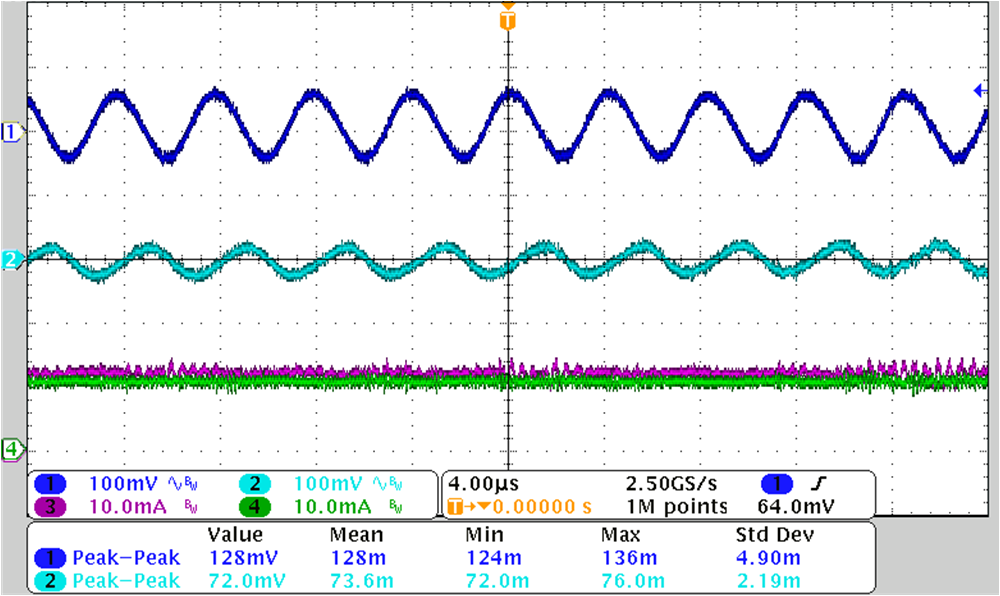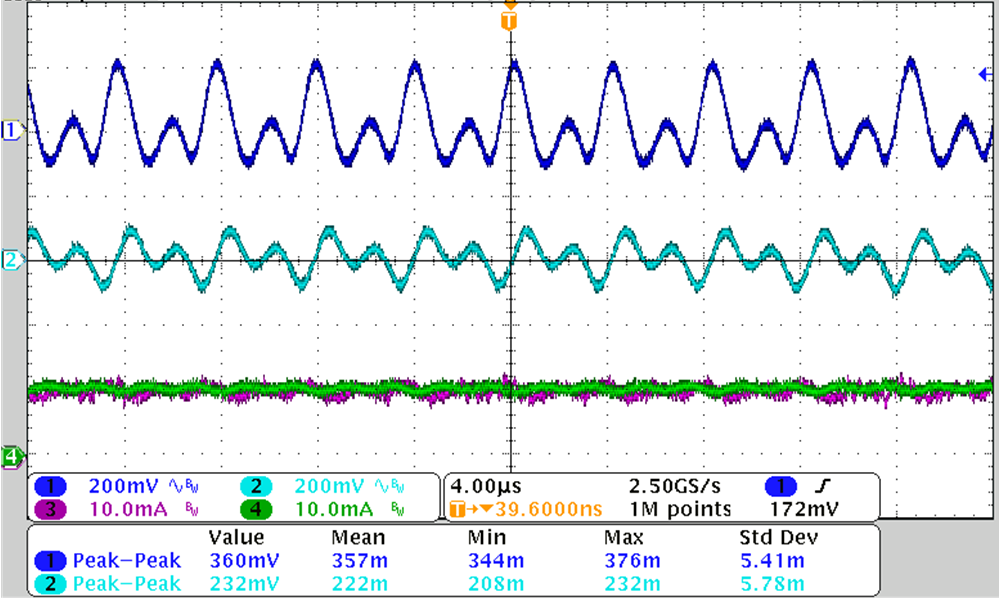SLVAFE7 September 2022 LM51551
3.3 Output Ripple Measurement
Figure 3-5 through Figure 3-8 show the output voltage ripple at 15-V and 7-V output voltage during no load and full load.

CH1: VOUT1, CH2: VOUT2, CH3: IOUT1, CH4: IOUT2
Figure 3-5 12-V Input, ±15-V No Load
CH1: VOUT1, CH2: VOUT2, CH3: IOUT1, CH4: IOUT2
Figure 3-7 12-V Input, ±75-V No Load
CH1: VOUT1, CH2: VOUT2, CH3: IOUT1, CH4: IOUT2
Figure 3-6 12-V Input, ±15 V, 10-mA Load
CH1: VOUT1, CH2: VOUT2, CH3: IOUT1, CH4: IOUT2
Figure 3-8 12-V Input, ±75 V, 10-mA Load